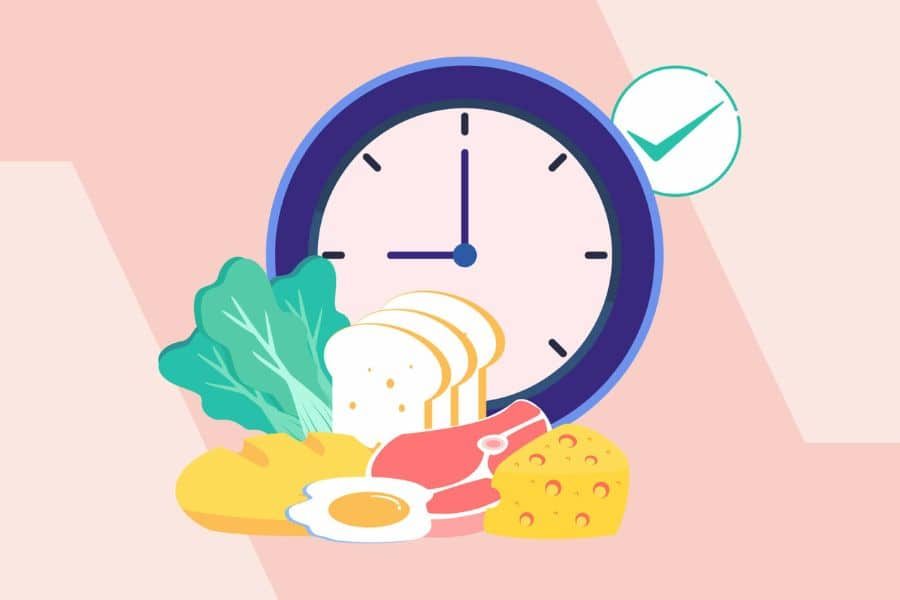Understanding Intermittent Fasting
What is Intermittent Fasting?
Intermittent fasting (IF) isn’t your typical diet; it’s more like a timing plan for your meals. Instead of keeping a close eye on the calorie count, with intermittent fasting, it’s all about when you chow down. The idea is to help you shed a few pounds and boost your overall health by taking advantage of your body’s natural fat-burning skills during those fasting gaps.
There’s a smorgasbord of fasting schedules out there. Some folks go for the 16:8 Method – skipping chow for 16 hours and eating for eight. Others might prefer the 5:2 Fasting Method, where they limit themselves for just two days a week. Then there’s Alternate-Day Fasting, which flips between feast and fast every other day.
How Intermittent Fasting Works
So, here’s the skinny on how intermittent fasting does its magic. When you put some time between meals, your body burns through your latest snack stash and kicks into fat-burning mode—a nifty trick called metabolic switching. Dropping insulin levels during a fast sends your body a memo to start burning up stored fat for fuel (Johns Hopkins Medicine).
There’s some science backing this too. Studies say fasting can spruce up various disease markers, knock down oxidative stress, and even keep your brain in tip-top shape (NCBI). Take a look at this breakdown of benefits:
| Benefit | What’s It All About? |
|---|---|
| Weight Loss | You’ll likely drop some pounds since you’re eating less and burning more fat. (NCBI) |
| Improved Metabolism | Fasting might sharpen up how your body handles insulin and hormones, helping with metabolism (Johns Hopkins Medicine) |
| Reduced Inflammation | Less oxidative stress and inflammation means a healthier you (NCBI) |
Now, don’t think that fasting longer than 24 hours equals extra brownie points for your health. Go overboard, and your body might horde calories instead (Johns Hopkins Medicine).
If you’re new to the fasting scene and need some pointers, our guide on intermittent fasting for beginners is worth a peek. Plus, see how mixing workouts with fasting can amp up your results in our intermittent fasting and exercise section.
Figuring out how intermittent fasting ticks can help you get the most out of it. Just tweak it to fit your day-to-day and score some healthy brownie points!
Types of Intermittent Fasting
So you’re curious about intermittent fasting, huh? It’s a nifty way to stay in shape and feel great. Here’s the down-low on three popular methods you can give a whirl.
16:8 Method
Alright, imagine this: you’re skipping breakfast—yup, you heard me—and squeezing all your munchin’ into an 8-hour window. This is the 16:8 gig. It’s pretty straightforward—just chow down from noon to 8 PM. Easy, peasy, lemon squeezy!
A study in 2022 showed folks got the hang of it, maintained weight, and even tweaked their sugar levels a bit.
| Time of Day | Eating/Fasting |
|---|---|
| 12:00 PM – 8:00 PM | Eating time, baby! |
| 8:00 PM – 12:00 PM (next day) | Nada—time to fast |
Check out more on how to nail an intermittent fasting schedule, and make a routine that dances to your tune.
5:2 Fasting Method
Here’s the deal: eat like you normally do for five days, then, for two days, turn down the calorie dial to about 500-600.
A 2021 study found folks shedding pounds at lightning speed in six weeks flat. But hey, life happened, and results fizzled out a bit over a year.
| Day | Eating/Fasting |
|---|---|
| Monday – Friday | Chow down as usual |
| Saturday – Sunday | Snip those cals to ~500-600 |
Peek at more on how intermittent fasting helps with weight loss. Got your interest piqued? Dive in!
Eat-Stop-Eat Diet
This one’s a bit of a rollercoaster: fast for 24 hours once or twice weekly. But you can sip on water, tea, and guilt-free drinks—just no munchies.
Doesn’t sound too bad, right? It’s a laid-back way to cut down those pesky calories and still tap into fasting perks. Medical News Today says it’ll give you room to flex.
| Day | Eating/Fasting |
|---|---|
| Monday | Dig in |
| Tuesday | Fast track (water, tea, calorie-free sippers) |
| Wednesday | Back to regular eats |
| Thursday | Regular eats |
| Friday | Hit that fast button |
| Saturday | Munch ‘til you drop |
| Sunday | Normal routine |
Got those taste buds thirsty for a healthy intermittent fasting meal plan? Get the lowdown on how to keep it wholesome when you’re not fasting.
These methods each offer something groovy, so pick the one that ticks your boxes. And hey, play it safe—give your doc a buzz before jumping in.
If you’re keen to see how others have fared with intermittent fasting results or are just getting started with intermittent fasting for beginners, there’s a heap of resources to help you get going. Cheers to feeling fab!
Benefits of Intermittent Fasting
Intermittent fasting (IF) isn’t just about skipping meals; it’s like giving your body a little vacation from munching. Let’s get into why IF is like hitting a jackpot for those aiming to shed pounds and give their health a nice boost. We’re talking weight loss magic, sprucing up metabolism, and keeping the inflammation beast at bay.
Weight Loss Benefits
Trying to drop a jeans size? Intermittent fasting is pretty popular for melting away those extra pounds. Shrinking your eating window means you’re likely to munch on fewer snacks or meals, leading to a calorie deficit without even trying too hard. Cool, right? A study found that folks doing intermittent fasting lost around 8% of their body weight in just eight weeks—boom!
| Fasting Method | Average Weight Loss (%) | Duration |
|---|---|---|
| 16:8 Method | 5% | 8 Weeks |
| 5:2 Fasting Method | 6.5% | 6 Months |
| Alternate-Day Fasting | 8% | 8 Weeks |
Metabolic Health Benefits
This magic fasting trick isn’t just about the scale. It’s like giving your metabolism a tune-up. Fasting can do wonders for insulin sensitivity, making it easier to keep the sugar levels in check and dodge type 2 diabetes. Some studies even said that fasting outpaced regular calorie cutting when it comes to dropping weight and fat mass, which is a nice little bonus!
Not to mention, it could lower cholesterol, regulate blood pressure, and even zap some pesky inflammation. So if you’re after an all-around health boost, intermittent fasting might just be your ticket. Check out more on how your metabolic health can do a little jig here.
Impact on Inflammation
Inflammation, it’s your body’s way of saying “Hey, I’m fighting off the bad stuff!” But when it decides to hang around too long, it becomes a problem child. The good news? Intermittent fasting might just help keep it in check, which is pretty handy for conditions like heart stuff and asthma. Science says fasting can slash oxidative stress and inflammation levels, leaving you feeling sprightly.
Animals in studies have shown fasting’s benefits in reducing inflammation, controlling sugar levels, and warding off insulin resistance. That translates to some nice perks for the ol’ brain and body. It’s not just about the waistline; fasting helps combat inflammation and its lovechild conditions, rounding up all the good vibes of a healthier life here.
By getting a grip on all these benefits, intermittent fasting can become your go-to strategy for smashing those health and weight loss goals. For tips and keeping hunger pangs at bay, check out our guide for beginners or peek at our meal plan ideas.
Intermittent Fasting and Health
Unraveling the health perks of intermittent fasting shows how it can boost different parts of your well-being. From tackling insulin issues to keeping your heart and brain in good shape, knowing these upsides might just fine-tune your fasting game.
Effect on Insulin Resistance
A big bonus of intermittent fasting is its knack for dealing with insulin resistance, known in type 2 diabetes circles. By dialing back insulin levels, fasting could help stop or manage the big ‘D.’ A 2022 study found folks fasting became more insulin-friendly, cutting down their diabetes risk (Medical News Today).
| Marker | Continuous Caloric Restriction (CCR) | Fasting-Based Strategies (FBS) |
|---|---|---|
| Insulin Sensitivity | Better | Way Better |
| Fasting Insulin Levels | Lower | Way Lower |
| HOMA-IR Levels | Lower | Way Lower |
Check out more on fasting and working out for maximum gains.
Cardiovascular Health Benefits
Intermittent fasting’s got the goods for your heart too. It shows promise in sprucing up heart health markers like reducing oxidative stress and calming inflammation. Mark Mattson, a big shot at the National Institute on Aging, has been poking around in this area with rodents. His studies suggest fasting helps clean up heart health markers (NCBI).
Cutting down oxidative stress and inflammation means a heart less likely to run into trouble—and that’s something anyone can get behind.
For a solid game plan, think about trying out an intermittent fasting schedule.
Brain Health Benefits
On the brain front, intermittent fasting packs a punch too. Research shows it can sharpen learning and memory while putting up a defense against things like Alzheimer’s. The brain boost comes from cutting down oxidative baddies and inflammation, the silent enemies of your noggin (NCBI).
| Health Aspect | Continuous Caloric Restriction (CCR) | Fasting-Based Strategies (FBS) |
|---|---|---|
| Memory Function | Maintained | Enhanced |
| Learning Function | Maintained | Enhanced |
| Oxidative Stress Reduction | Better | Improved |
Get the scoop on fasting and mental benefits for long-term brainy gains.
Adding intermittent fasting into your routine might just nudge your insulin levels the right way, strengthen your heart, and sharpen your mind. These perks make it clear fasting isn’t just about dropping pounds but boosting your whole health vibe. Explore different strategies and find what works for you with our beginners’ fasting guide.
Different Approaches to Intermittent Fasting
Finding the right intermittent fasting style can seem like picking your favorite donut—everyone’s got a different preference! We’ve got three fan-favs in the fasting universe: the Warrior Diet, alternate-day fasting, and the 20-hour fasting window.
Warrior Diet
Like a ninja skipping breakfast, the Warrior Diet pushes you to fast for 20 hours with only little bites of fruits and veggies, saving up for a big ol’ meal at night. The idea? Channel our inner caveman who probably lived on nighttime feasts (Medical News Today). Think of it as hitting the pause on meals, then diving into dinner like it’s Thanksgiving—every night.
It’s a bit of a mental gym workout, especially if you’re just starting, but it’s supposed to wake up your body’s fat-burning fairy and spark some autophagy.
Alternate-Day Fasting
Alternate-day fasting is like playing hopscotch with your eating habits—skip a day, feast a day. Fast days mean sipping calorie-free drinks, and maybe having a mini snack to keep you sane. This approach is a winner when it comes to losing weight and bettering insulin sensitivity (Medical News Today).
Here’s what a week might look like:
| Day | Eat or Fast? |
|---|---|
| Monday | Chow Down |
| Tuesday | Zip It |
| Wednesday | Chow Down |
| Thursday | Zip It |
| Friday | Chow Down |
| Saturday | Zip It |
| Sunday | Chow Down |
Starting off can feel like jumping into the deep end, but it strikes a nice deal between casual munching and going cold turkey.
20-Hour Fasting Window
The 20-hour fasting window takes after the Warrior Diet twin, but with a twist. Fast all day long, and unlock the fat-burning switch to unleash ketones in your blood—goodbye extra flab! (Medical News Today).
This routine gives you wiggle room to adjust which hours work best for your daily grind, allowing more meal flexibility. Feast within these hours:
| Time | What’s Cookin’? |
|---|---|
| 8 PM – 4 PM | Nada |
| 4 PM – 8 PM | Feast Time |
Whichever fasting buddy you pick—Warrior, alternate, or the 20-hour shift—the trick is to find what fits like a glove and meets your health targets. Keep those beginner’s tips for intermittent fasting in your back pocket and mix in nutritious meal ideas for a well-rounded game plan.
Practical Tips for Intermittent Fasting
Intermittent fasting can help with shedding pounds, improving how your body works, and calming inflammation. Let’s chat about some easy tricks to squeeze the best out of it.
Nutritious Food Choices
Even though you’re focusing on the timing of your meals, what you put on your plate still matters. Packing your eating window with nutrient-loaded foods will boost fasting benefits. Think lean meats, colorful veggies, fresh fruits, hearty grains, and crunchy nuts and seeds. Steer clear of overly processed stuff for better results and overall health.
Good Food Picks:
- Lean Protein: Chicken, fish, beans
- Vegetables: Spinach, broccoli, kale
- Fruits: Berries, apples, oranges
- Whole Grains: Quinoa, brown rice, oats
- Nuts and Seeds: Almonds, chia seeds, flaxseeds
Hungry for meal inspo? Peek at our intermittent fasting meal plan.
Managing Hunger and Cravings
Feeling peckish when kicking off intermittent fasting? Totally normal! Here’s how to handle it:
- Stay Hydrated: Keep chugging water, herbal tea, or black coffee; it helps battle hunger.
- Eat More Volume, Less Calories: Load up on veggies and fruits during the eating window.
- Stay Active: Keep yourself busy during fast times to distract from hunger.
- Catch Zzz’s: Not enough sleep can make you hungry, so aim for a good night’s rest.
Need more newbie hunger hacks? Check out our intermittent fasting tips for beginners.
Potential Side Effects and Solutions
Intermittent fasting might bump you with headaches, tiredness, or the grumps. Here’s how to dodge them:
- Ease In: Start slow by stretching your fasting time little by little.
- Balance Your Electrolytes: Choose mineral-rich foods or supplements to keep your balance.
- Tune In: Listen to your body and tweak fasting times if needed.
- Find Your Crew: A fasting support group can bring motivation and handy pointers.
Curious about more side-effect busters? Visit our piece on intermittent fasting and exercise.
Try out these nifty tips, and you’ll fast-track your intermittent fasting adventure while soaking up its health perks.










